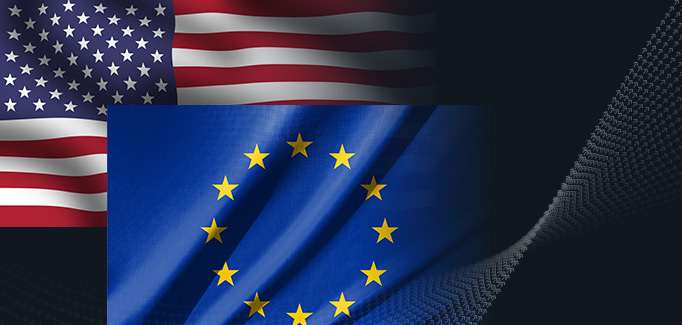A Money Launderer Could be Next Door
June 1st, 2023

We like to think that we know our neighbors fairly well; we wave to them as we leave for work, maybe exchange a few pleasantries while getting the mail or watching the kids playing outside. Maybe we’ve even invited them over for a BBQ or to watch the game.
But how well do we really know them?
I’ve been pondering this ever since the news broke that someone I know peripherally was arrested on suspicion of money laundering. And she’s part of a wider criminal enterprise involving a well-known local establishment. While the accused money launderer is one of those casual acquaintances we all have, it nevertheless struck a chord with me.
Our children have attended the same birthday parties over the years. We exchanged pleasantries as our kids would play together. I never would have guessed her family could be involved in the criminality they are accused of or her role with the family was to launder illicit proceeds.
This was not a minor offense or possible misunderstanding. And while the case is still pending, it goes to show how easy it can be for criminals to hide in plain sight. That’s exactly what good financial criminals do: They layer their illicit wealth to make it look clean. And then integrate fully into society as if they’re respectable, upstanding members of the community.
Money Laundering Hits Home
According to the Tax Justice Network’s Financial Secrecy Index, the U.S. has become the preferred destination to hide illicitly obtained money, surpassing previously top-ranked tax havens like Switzerland, Luxembourg, and Singapore.[1] A study of financial legislation from 100 countries also indicates that certain laws create loopholes for criminals that simplify the process of concealing and laundering funds. For example, insufficient funding has historically prevented the U.S. Treasury Department from imposing fresh anti-money laundering (AML) laws that can effectively keep pace with rapidly evolving money laundering tactics.
These statistics underscore the fact that money laundering is not a fringe crime that can be relegated to distant shores by faceless criminals. Globally, about $2 trillion in funds is laundered annually, according to the United Nations’ Office on Drugs and Crimes.[2] The exact amount is actually challenging to approximate given the often-murky circumstances and complexity surrounding money laundering. But the U.S. accounts for around $300 billion of that laundered money annually, or 15% – 38%.[3]
The pandemic was a major driver of financial crimes as criminals took advantage of the chaos resulting from the sudden shift to digital and the ensuing explosion of online activity. The reliance on technology became a boon to criminals, as they widened their nets and modernized their techniques to escape with illegally acquired funds and elude detection. Essentially, even the most unimaginative criminals have all the tools at their disposal—to not only hone their craft but be successful at it.
Keeping Up with the Joneses (Money Launderers Next Door)
So about the alleged money launderer next door who was arrested along with her immediate family on suspicion of money laundering—was tech savviness her downfall? No. Although this family was originally investigated by state law enforcement for ties to prostitution, ultimately, it was the money laundering charge that precipitated arrest. This quintessential family next door represents an underworld that is closer to your front door than you think: The ‘typical’ neighbor can be a career criminal engaged in financial crime.
Case in point, the notorious money laundering case entailing over $4 billion of stolen Bitcoin.[4] The accused perpetrators, a relatively obscure married couple known for their “goofy online lives” and portrayal of averageness, baffled both acquaintances and the public alike when their alleged involvement came to light. Upon scrutinizing their social media following the arrests of the accused couple, the public even questioned their mental capacity to commit such a crime.
This couple and my acquaintance are accused of willingly committing crimes, but there’s some gray area. The accessibility of advanced technologies and the movement toward mainstream virtual currencies adds layers of sophistication to money laundering schemes and makes it easy for anyone to unwittingly become accomplices. For example, criminals combine different social engineering tactics, like romance and crypto scams, to target individuals and manipulate them into acting as money mules.
How does it start? It can be with an interaction on a dating app, followed by the victim being coerced into helping the criminal exchange funds via Bitcoin ATMs (BTMs), which are minimally regulated. In the U.S. alone, there’s over 42,000 BTMs, making this an enticing portal for cybercriminals.[5] In this case, the victim might be an unsuspecting participant motivated by love, but the legal consequences are just as severe—unwitting or not.
As regulations shift, financial crime becomes more complex, due to real-time money movement and digital acceleration—enabling criminals seeking to obscure their ill-gotten gains through the usage of money mules and shell companies. Institutions need a holistic view of their customer risk, whether it be an individual or corporation, and not only understand the direct risk of the entity, but also their inferred risk due to those entities they interact with.
Money laundering is not an isolated white-collar crime. It’s closely linked to heinous activities such as human trafficking and drug trafficking. So stay vigilant out there and be a staunch advocate of robust AML and KYC practices.
Because a money launderer could be your next-door neighbor.
[1] Brooks, K. (2022, May 23). The U.S. is now the best country for illegally hiding money, report finds. www.cbsnews.com https://www.cbsnews.com/news/fact-coalition-report-us-money-laundering/
[2] UNODC.org (2022). Money laundering. www.unodc.org https://www.unodc.org/unodc/en/money-laundering/overview.html
[3] Kolmar, C. (2022, March 20). 19 money laundering statistics [2022] facts about money laundering in the U.S. www.zippia.com https://www.zippia.com/advice/money-laundering-statistics/
[4] Watkins, A. and Weiser, B. (2022, February 13). Inside the Bitcoin laundering case that confounded the internet. www.nytimes.com https://www.nytimes.com/2022/02/13/nyregion/bitcoin-bitfinex-hack-heather-morgan-ilya-lichtenstein.html
[5] Berry, M. (2021, November 8). Transnational fraud exploits crisis and technology to expand reach. www.thomsonreuters.com https://www.thomsonreuters.com/en-us/posts/investigation-fraud-and-risk/transnational-fraud/




